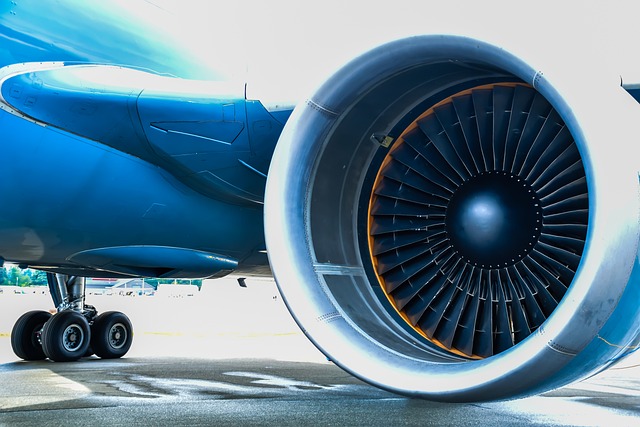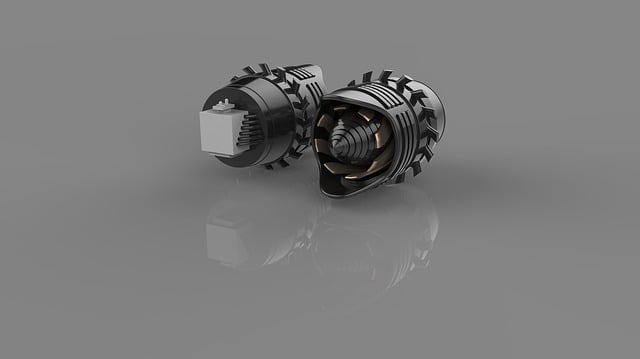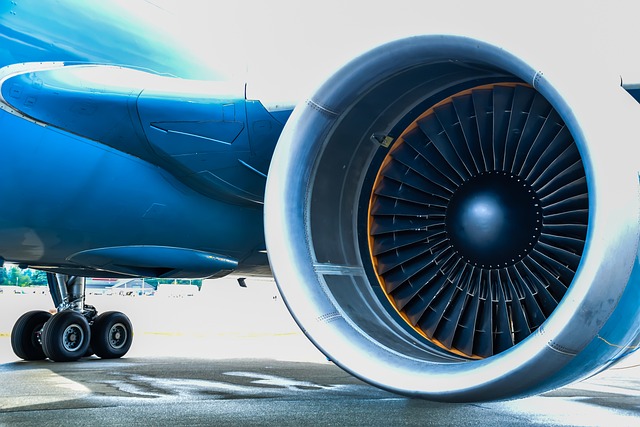Aerospace Pioneers: Crafting the Skies with Safety, Efficiency, and Sustainability
Aerospace engineering has seen dramatic advancements since the Wright brothers' first flight i…….

Aerospace engineering has seen dramatic advancements since the Wright brothers' first flight in 1903, culminating in sophisticated passenger jets with wide bodies and fly-by-wire control systems. The space race propelled technological growth in aerospace, enabling communication satellites and continuous human presence on the International Space Station. Today, the sector is at the forefront of innovation, focusing on sustainable practices, with electric and hybrid-electric propulsion for short-haul flights and the use of advanced composites for lighter, more fuel-efficient, and durable aircraft. Current research includes smart materials that adapt to environmental conditions, aiming to enhance flight performance and safety while reducing the aviation industry's environmental impact. This progress underscores the integral role of aerospace engineering in advancing human exploration and maintaining the leading edge of modern transportation.
Exploring the skies, aerospace engineering has consistently pushed the boundaries of what is possible, transforming the dream of flight into a tangible reality that underpins modern aviation. This article unravels the pivotal contributions of aerospace engineering to the advancements in flight technology, from historical milestones to the cutting-edge innovations reshaping aircraft design for enhanced safety and efficiency. As we delve into the future trajectory of aviation, focusing on sustainable technologies and advanced materials, the role of aerospace engineering becomes increasingly evident—it is not just about soaring through the skies but also about safeguarding our planet. Join us as we chart the evolution of aerospace engineering and its indelible impact on the science of flight.
- Aerospace Engineering Milestones Shaping Modern Flight
- Innovations in Aircraft Design Enhancing Safety and Efficiency
- The Future of Aviation: Sustainable Technologies and Advanced Materials
Aerospace Engineering Milestones Shaping Modern Flight

Aerospace engineering has undergone a series of transformative milestones that have significantly shaped modern flight. The Wright brothers’ historic first controlled, sustained flight in 1903 marked the beginning of a new era, leading to the development of airplanes capable of carrying more passengers over longer distances. Subsequently, advancements in aerodynamics, materials science, and propulsion systems have been pivotal in enhancing aircraft performance and safety. The introduction of jet engines in the mid-20th century was a game-changer, drastically reducing travel times and making global connectivity possible.
The subsequent decades saw the advent of wide-body jets, which expanded passenger capacity and comfort, and the development of the fly-by-wire control system, which improved aircraft maneuverability and response. The space race further propelled aerospace engineering, with satellites, space shuttles, and the International Space Station becoming integral to both scientific exploration and practical applications such as satellite communications and weather forecasting. Today, research continues apace in areas like hypersonic flight, unmanned aerial vehicles (UAVs), and advanced composite materials, all of which are poised to revolutionize how we travel and interact with our environment. These ongoing advancements underscore the enduring role of aerospace engineering in pushing the boundaries of what is possible, ensuring that modern aviation remains at the forefront of human achievement and discovery.
Innovations in Aircraft Design Enhancing Safety and Efficiency

Aerospace engineering has been pivotal in advancing aircraft design, leading to significant enhancements in both safety and efficiency within modern aviation. Innovations such as composite materials have revolutionized the construction of airframes, resulting in lighter yet stronger structures that improve fuel efficiency and reduce operational costs. These materials also contribute to increased durability and resistance to environmental factors, extending the lifespan of aircraft and reducing maintenance requirements. The integration of advanced aerodynamics and computational fluid dynamics has allowed designers to refine wing shapes and control surfaces, optimizing airflow and lift, which is crucial for efficient flight. This optimization not only reduces drag but also enables aircraft to carry more passengers or cargo at higher speeds, if needed, while consuming less fuel. Additionally, the incorporation of modern avionics and sophisticated flight management systems has greatly enhanced the pilot’s situational awareness and the aircraft’s autonomous capabilities, leading to a reduction in human error, which is a significant factor in aviation accidents. These technological advancements collectively contribute to a safer and more efficient experience for passengers, operators, and the environment. The continuous evolution of aerospace engineering ensures that the science of flight remains at the cutting edge, with new innovations set to further transform the industry.
The Future of Aviation: Sustainable Technologies and Advanced Materials

As we look to the horizon, the future of aviation is inextricably linked with the development of sustainable technologies and the utilization of advanced materials. The aerospace engineering sector is at the forefront of innovation, pioneering new methods to minimize the environmental footprint of air travel. Renewable energy sources are being integrated into aircraft design, promising to reduce reliance on fossil fuels. Electric and hybrid-electric propulsion systems are being tested, with prototypes demonstrating their viability in short-haul flights. These advancements not only contribute to a cleaner atmosphere but also pave the way for quieter, more efficient aircraft that can significantly reduce noise pollution over urban areas.
In parallel, the strategic application of advanced materials is revolutionizing how aircraft are constructed. Engineers are experimenting with composites and novel alloys that offer greater strength-to-weight ratios, which in turn can lead to lighter and more fuel-efficient planes. These materials also provide improved durability and resistance to harsh environmental conditions, extending the lifespan of aircraft and reducing maintenance costs. The integration of smart materials capable of adapting to varying temperatures and stress levels is another area of research that promises to enhance aircraft performance and safety. The synergy between sustainable technologies and advanced materials will undoubtedly propel aviation into a new era, one characterized by increased efficiency, reduced environmental impact, and continued advancement in the science of flight.
Aerospace engineering has consistently evolved, driving advancements in modern aviation through significant milestones that have reshaped the science of flight. Innovations in aircraft design have significantly improved safety and efficiency, marking a new era for global travel and cargo transport. As we look to the future, sustainable technologies and advanced materials promise to further revolutionize aviation, making it more environmentally friendly and robust. The enduring journey of aerospace engineering, underpinned by continuous research and development, is set to redefine the boundaries of what is possible in the skies above.




